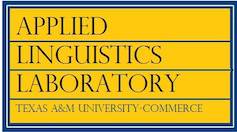Didattica delle lingue a distanza durante l’emergenza Covid-19: il quadro generale
DOI:
https://doi.org/10.21283/2376905X.14.245Keywords:
REMOTE TEACHING, COVID-19, FOREIGN LANGUAGE TEACHINGAbstract
The shift to online teaching aimed at containing the spread of Coronavirus has led the group of Research and Action on Foreign Language Teaching to release a survey with the purpose of assessing the impact of remote instruction on foreign language teaching. 136 teachers and 241 students at both the university and secondary level have participated in this survey. The aim of this article is to describe the content of the survey and the make-up of the participants and to present the main findings. Of particular note from this survey is (i) the lack of clear directives from their educational institutions, which is a symptom of the immediate nature of the measures put into place; (ii) a generalized resistance to experiment with new pedagogical resources that are better suited for the digital format; (iii) the greatest challenge in developing the ability to interact and to communicate orally; (iv) a high level of difficulty in guaranteeing the trustworthiness and the integrity of the assessments.
Downloads
Published
How to Cite
License
Copyright (c) 2021 Sergio Conti

This work is licensed under a Creative Commons Attribution 4.0 International License.


